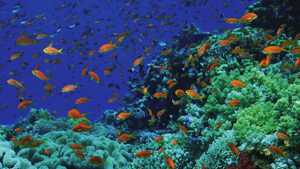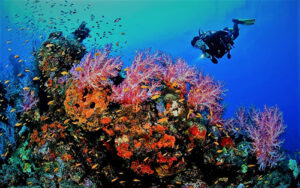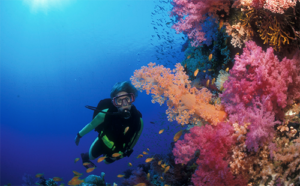From the Giza Pyramids, to the millennia-old temples of Luxor and Aswan, and the fascinating nature of Sinai and the Western Desert oases, Egypt is full of attractions and landmarks.

However, there is an equally fascinating world below the surface in this country, namely in the depths of its coasts, especially the Red Sea coast.
The coral reefs of the Red Sea are renowned among international scuba divers for the soft corals on display and the vast amount of sea life.

This sea life ranges from colourful reef fish and nudibranchs, to sharks, dolphins, turtles, rays, and even dugongs.
Sharm el-Sheikh is a main destination on the Red Sea for divers of all stripes.
The city is located in close proximity to the most important diving sites in the area, including the Straits of Tiran.
Among the top diving sites in the area are also Straits of Gubal. Advanced divers like to go to Marsa Alam, the nearest base for diving Egypt’s deep diving sites.
The Red Sea is also a major wreck-diving destination.
The wreck of Thistlegorm, a British WWII cargo ship that was on its way to resupply allied troops when it was bombed by the Germans in 1941, is among the most important of sites in the area.

Today, the site is regarded by divers as one of the top five wreck dives in the world, thanks to the vast cargo of cars, motorbikes, and WWII memorabilia that can be seen both scattered on the seabed around the wreck and inside the ship itself.
J.L. Thompson and Sons built Thistlegorm in Sunderland, County Durham, as yard number 599.
It was launched on 9 April 1940 and completed on 24 June. The ship had a registered length of 415.1 feet, a beam of 58.2 feet, and a depth of 24.8 feet. The ship’s engine was built by North Eastern Marine Engineering. It was a three-cylinder triple-expansion engine.
The ship was built for Albyn Line, who registered it at Sunderland.

Dive boat trips to the wreck are organised from both Sharm el-Sheikh and Hurghada.
Ras Mohammed National Park is another very important underwater attraction in the Red Sea.
The park is situated in the tourist region of the Red Sea Riviera. It is located 12 kilometers from Sharm El Sheikh.
The park spans an area of 480 square kilometers, including 135 square kilometers of surface land area and 345 square kilometers over water.
Marsa Bareika is a small bay inlet in Ras Mohammed, and Marsa Ghozlani is a very small inlet located across from the park’s Visitors’ Center.
Ras Mohammad encompasses two islands, Tiran and Sanafir. Tiran Island is located approximately 6 kilometers offshore from Sinai.
Underwater caves formed as the result of earthquakes are located in Ras Mohammad.

About mangrove forest that covers a 1.16 kilometer-shallow channel is located at the southernmost end of Ras Mohammad.
Near the mangrove and approximately 150 meters inland, there are open cracks in the land, caused by earthquakes.
One of the cracks is approximately 40 meters in length and 0.20−1.5 meters in width.
Within the cracks, there are pools of water, some with a depth of over 14 meters.
These diving sites can be reached from Cairo via multiple means, including by air, with several local airlines organising trips to Sharm el-Sheikh and Hurghada.
They can also be reached by bus from the centre of the Egyptian capital.







Discussion about this post